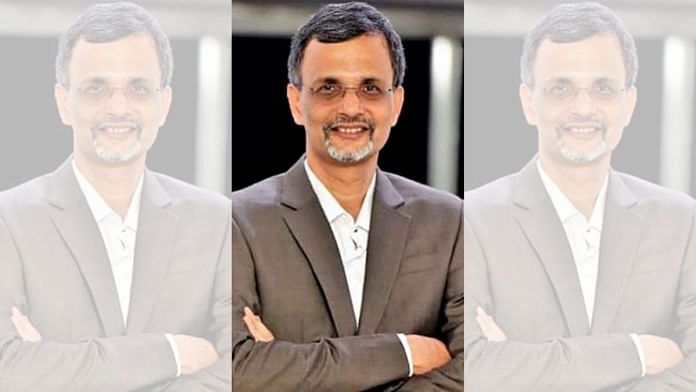New Delhi: Expectations of the United States Federal Reserve hiking rates aggressively in 2022-23 to contain inflation, and volatility in global crude oil prices as result of the Russian invasion of Ukraine, are two strong headwinds confronting the Indian economy in the short term, Chief Economic Adviser V. Anantha Nageswaran said Tuesday.
Nageswaran, who joined the Ministry of Finance just ahead of the presentation of the Union Budget 2022, said that he was surprised at the hawkishness of the Fed’s stance on rate hikes in response to inflation in the US, which hit a 7.9 per cent annual rate in February — a four-decade high.
“I was surprised at the extent of hawkishness of the Fed in their projections. It remains to be seen whether the reactions of markets will allow them to hike the fed funds rate to 2.75 per cent. So, I am waiting to see the peak of this cycle. Two more reviews will give a clear picture on the Fed’s action,” he said at an event organised by the All India Management Association in Delhi.
The Federal Reserve in March hiked the federal funds rate by 25 basis points (a quarter percentage point), a first in more than three years, after keeping it near zero since the beginning of the Covid-19 pandemic. The Federal Open Market Committee, which decides the key policy rates in the US, also said that it would further increase rates six times in consecutive review meetings this year.
Economists do not expect the Fed’s rate hikes to have a big impact this year, as a large portion of the capital outflows from India have already taken place since October 2021 in anticipation of global monetary tightening.
As a response to these headwinds, the Reserve Bank of India in its monetary policy review Friday announced that it would withdraw its accommodative measures over a multi-year timeframe, and has placed inflation as a priority above growth.
In India, retail inflation measured through the Consumer Price Index (CPI) surged to an eight-month high of 6.07 per cent in February, primarily on account of the rise in fuel prices. This is the second straight month that the headline inflation rate has stayed above the RBI’s medium-term target of 4 per cent within a band of 2-6 per cent.
Govt, oil companies may share burden if prices stay above $100 a barrel
Nageswaran said that if global crude oil prices remain above $100 a barrel till September, the government may have to revise its budget projections for 2022-23 on growth and subsidies. He also said that the burden of these higher global prices will have to be shared with the public and with oil marketing companies.
“Some burden sharing will have to happen among the government, individuals, and oil marketing companies if oil prices persist above $100 per barrel for one to two quarters,” he said.
The price of India’s crude oil basket fell to $97.82 per barrel Monday, according to data from the Petroleum Planning and Analysis Cell, under the Ministry of Petroleum and Natural Gas. Crude oil prices slipped as lockdowns and travel restrictions implemented in China raised concerns over demand for fuel.
“Their (increase in global oil prices) pass-through to retail prices, though limited till now given the continuing slack in the economy, needs to be monitored carefully,” the RBI said last week.
In response to the increase in global oil prices, the oil companies in India — Indian Oil, Hindustan Petroleum and Bharat Petroleum — have raised the pump prices of petrol and diesel by Rs 10 per litre each. In the national capital, petrol is sold at Rs 105.41 a litre, while diesel is sold at Rs 96.67 per litre.
In January, the Economic Survey had estimated that India’s GDP would grow by around 8-8.5 per cent in 2022-23. But the RBI — which in February had projected 7.8 per cent growth this financial year, starting in April — has already cut its projection to 7.2 per cent, in view of the escalation in geopolitical tensions.
“Although India’s direct trade exposure to countries at the epicentre of the conflict is limited, the war could potentially impede the economic recovery through elevated commodity prices and global spillover channels,” RBI Governor Shaktikanta Das said, announcing the monetary policy decision.
(Edited by Rohan Manoj)
Also read: Why Modi govt will meet its tax targets this year without much effort despite slow growth



